Respected elder and senior painter Mavis Ngallametta (1944–2019) passed away mere months after QAGOMA confirmed her solo exhibition for 2020. True to her generous character and larger-than-life personality, Ngallametta was determined for the show to go on, even as her health declined.
In late October 2019, the artist’s friend and artistic advisor, Gina Allain, spoke candidly with Katina Davidson and Bruce Johnson McLean about Mrs Ngallametta’s career, their working relationship, and her fascinating artistic process, which combined customary techniques with the experimental ingenuity of a naturally talented artist.
Mavis Ngallametta ‘Little swamp on the way to Obun’
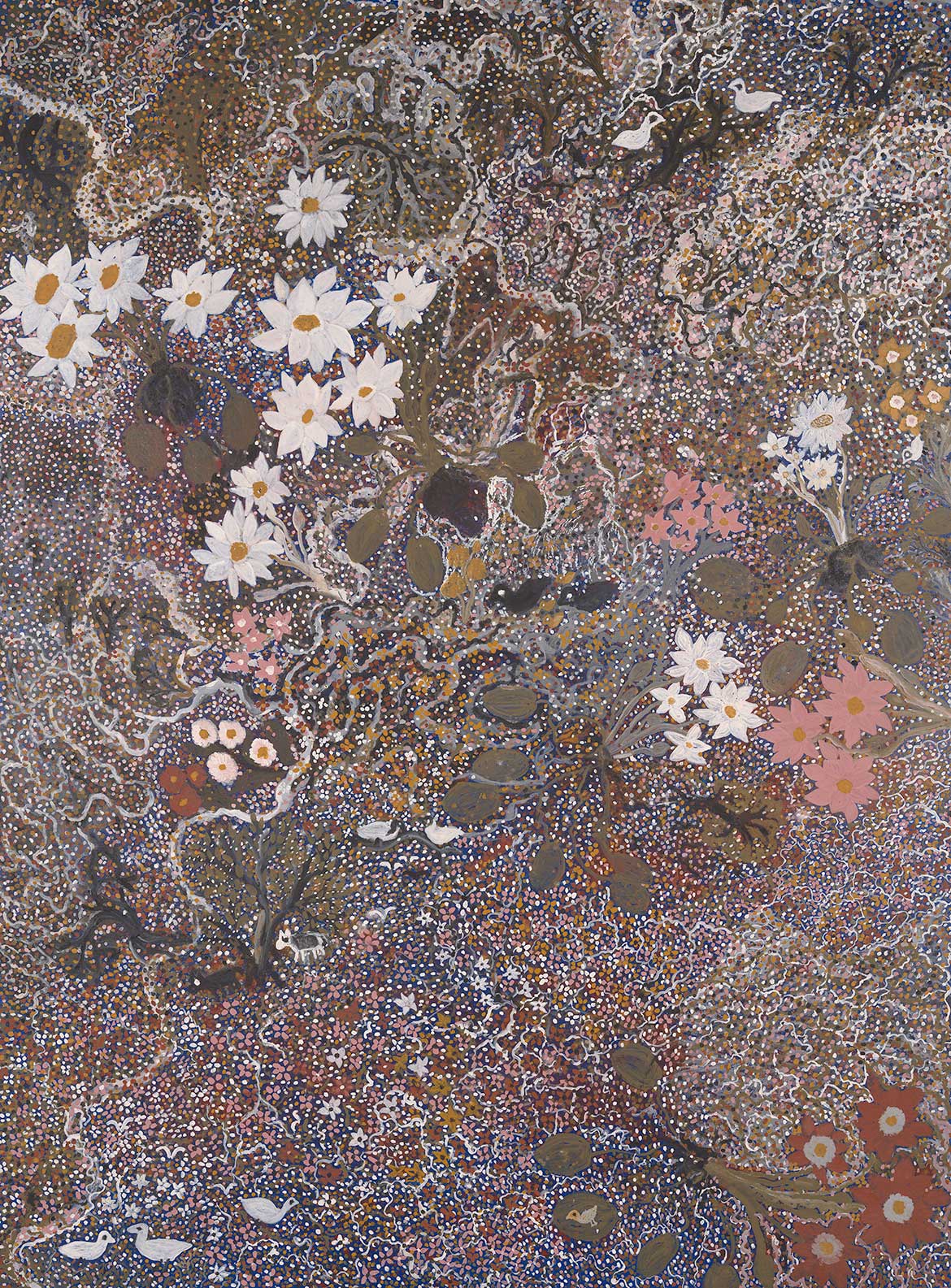
In 2008, Gina Allain periodically travelled from her home in Adelaide to Aurukun on the western coast of Cape York, to work with her husband, Guy, who managed the Wik and Kugu Art Centre. The centre was, and continues to be, well known for its playful ku (camp dogs) and strong men’s painting and sculptural traditions. With a background working in the creative arts and theatre, as well as being a trained art therapist, Gina established painting workshops for the women of Aurukun using vibrant acrylics; a stark contrast to the earthy ochres used by the men painting ancestral narratives. From these initial workshops blossomed an enduring friendship and mutual respect between Gina and Mavis Ngallametta, and grew over the course of the subsequent 12 years.
Mavis attended the very first Aurukun women’s painting workshop, along with many of the women from Aurukun, in January 2008. Already in her 60s, the artist enjoyed experimenting and painted vibrant flowers. These initial works would become the precursors to her monolithic pamp (swamp) paintings.
Creative practice can be a respite for many people. Of those early workshops, Gina recalls:
I think using art therapy techniques [made the participants] realise that it doesn’t matter what it looks like, it’s all about enjoying it and playing with the materials and allowing the work to just be there without overly criticising it . . . or expecting some marvellous outcome in the beginning when you start. [Mavis] just plugged away.

It was clear from the beginning that Mavis had a keen eye for pattern, colour and detail, and wanted to learn, often engaging in critical dialogue with Gina about her works. After subsequent workshops, in which she experimented with painting in ochre on paper or a neutral canvas ground, Gina suggested she try painting on a brilliant blue-primed canvas. This rich, deep blue pigment — symbolic of the water and sky that feature in her work — also allowed her to make new hues by applying the ochre in thin washes, creating new and otherwise unachievable palettes. Gina recalls that The beach at Iklet 2010 was a foundational work in this transformation. Shortly after this period, Mavis began painting exclusively with ochre on a surface primed in blue synthetic polymer paint, and upsized to canvases ‘as tall as the ceiling’, at the suggestion of gallerist Martin Browne. This new size suited her style of painting and encouraged the kaleidoscope of perspectives to develop.
Mavis Ngallamettaa ‘Ngak-pungarichan (Clearwater)’
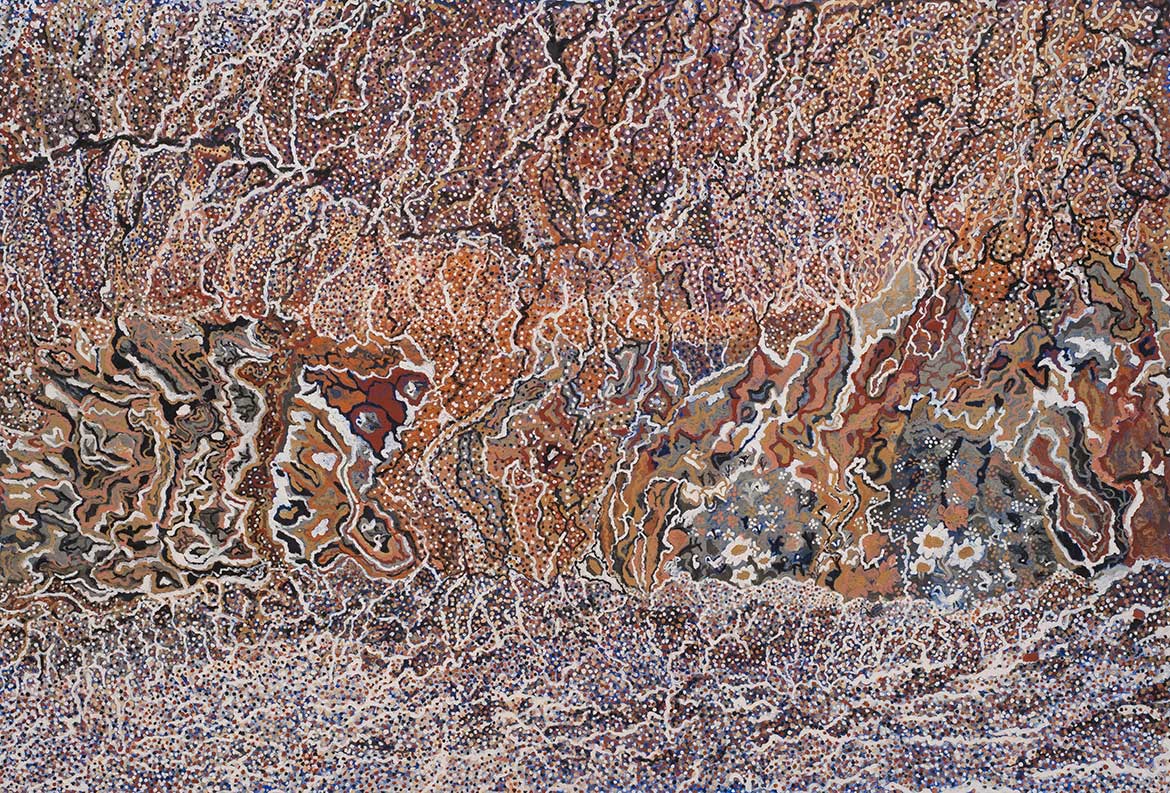
Having learned the correct way to harvest and prepare ochre and pigments from her elders, Uncle James and Aunty Annie Kalkeeyorta, as a teenager, Mavis was no stranger to creating her own art materials. Gina would often accompany her when she would ‘go cruising’ to collect pandanus for weaving, or digging for yellow ochre from the bone-dry clay pans of Yalgamunken. During these harvesting trips, they would try to find the right wood to burn to cook the ochres, or to create charcoal to mix with binder. They would also collect new materials to experiment with, testing new dyes for pandanus. Excited to see an impressive, brilliant-orange ‘ant bed nest’ or termite mound — the colouration of which was the result of being burnt in a bushfire — on the side of the road, they would stop to collect samples. When looking closely at the heart of Ngak‑pungarichan (Clearwater) 2013, you can see this orange and its texture forming mini mounds on the surface, specks of stone, raw from the earth.
Her country, including Kendall River to the south of Aurukun, and her adopted son Edgar’s country to the north of the bay, are reflected in all of her works. Aurukun is home to a number of family groups, who own certain parts of the country. Mavis would only ever paint her own and Edgar’s country, with his permission. Due to its remoteness, many of these sites are accessible only by boat. A ‘coastal perspective’, looking back towards the land from a bobbing boat, features in a number of her works. Mavis painted from these memories; she almost exclusively painted from memory or dreams, rather than en plein air. Gina explained that the artist would work on paintings one at a time, over the span of many weeks, and sometimes months.
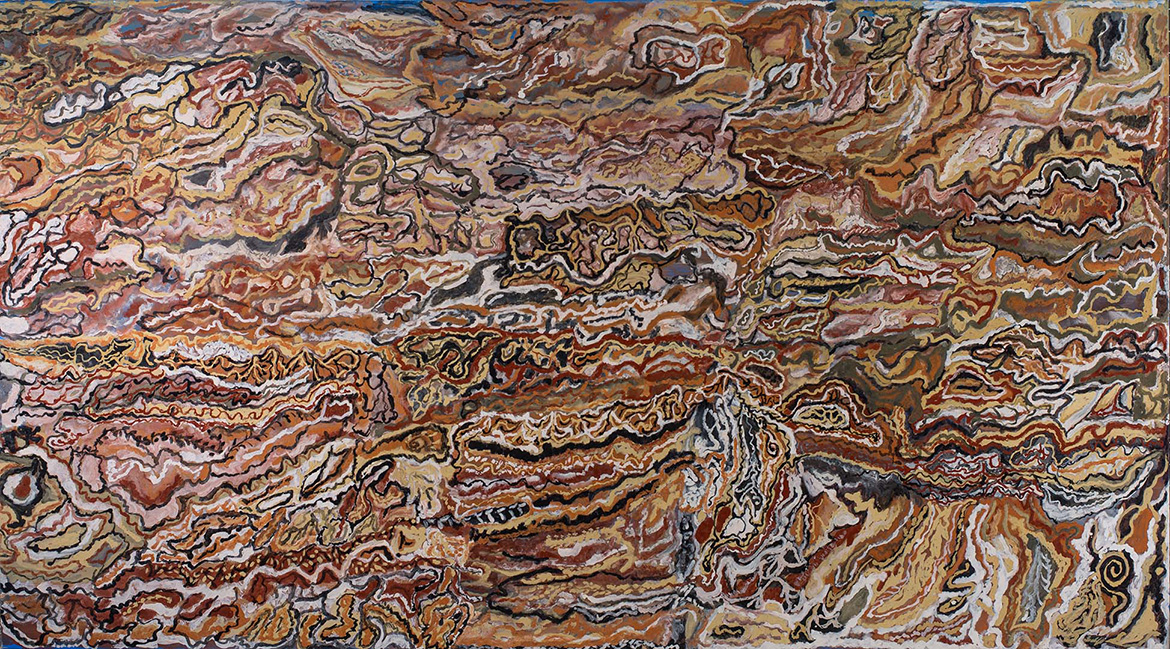
Mavis owned a boat and would travel almost everywhere in it, often visiting Wutan — a site at which she camped during holidays as a child, growing up on the Mission. Kendall River is so remote that a road was constructed only in the last year of her life. She was, however, able to fly over by helicopter. The opportunity to see the country from an aerial perspective was important for her practice, and she made a number of works dedicated to this journey, including Flying to Kendall #1 and #2 (both 2013). She also explored aerial perspectives in Collecting ghost nets at Big Horse Creek 2016 — Gina recalls that Mavis saw a map of the river and liked its form, so incorporated it in the work.
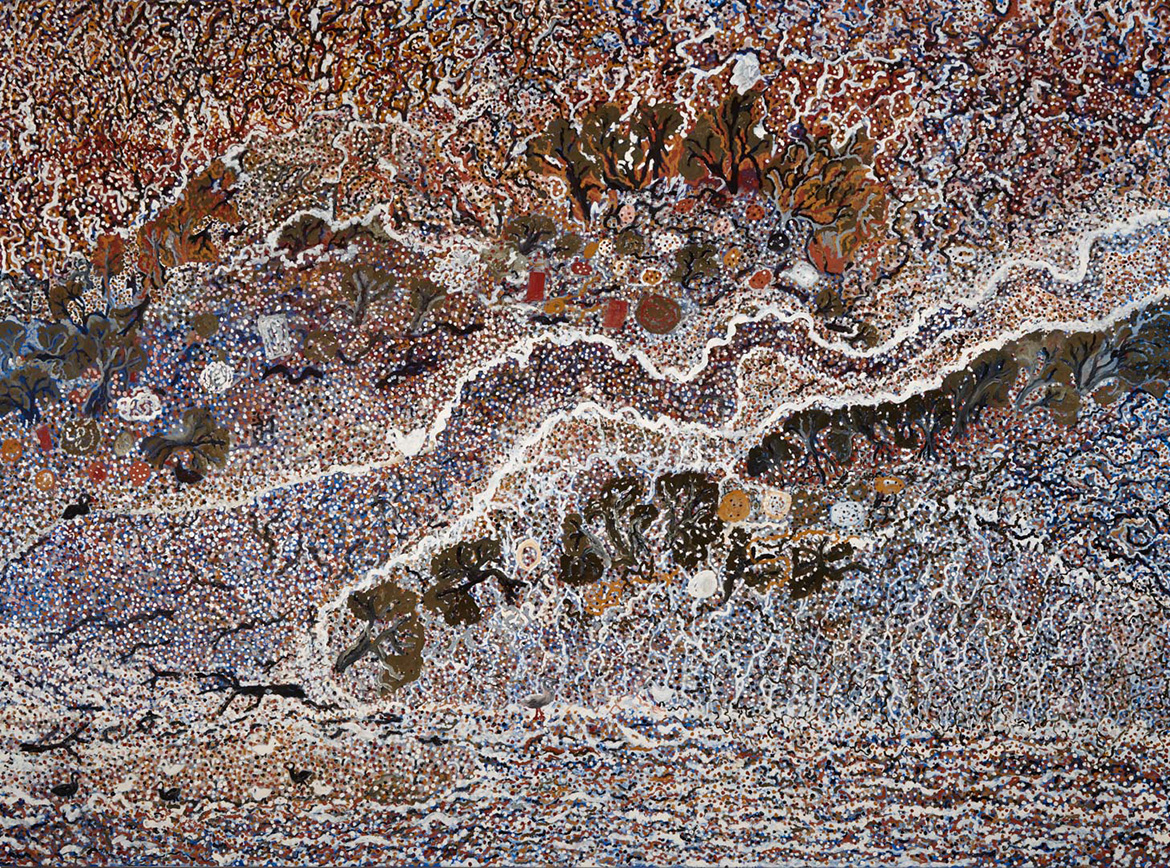
Abstract as they may appear, Mavis’s works are so recognisable to those who know the country that passers-by in the studio would stop and exclaim, ‘That’s Wutan!’, for example, before moving on. She had detailed knowledge of, or an explanation for, every work; for one about a fishing trip, where others in the party are painted but the children were missing, she would proclaim, ‘those kids are in the picture. They’re behind that boat, swimming, where they shouldn’t be’.
Seeing aerial photographs of the coastline around Aurukun, we can recognise and decipher the meandering lines in Mavis’s paintings: the white of the waves and glistening streams, tan sandy beaches, eucalyptus-green shrubs and rich, cracked, terracotta earth. She captures a landscape buzzing with energy, with the trained eyes of an elder and knowledge holder. While Mavis Ngallametta is no longer with us, her energetic spirit is alive in these works, sharing cherished memories of her home. She certainly loved travelling, but loved returning home.
Katina Davidson is Acting Curator, Indigenous Australian Art , and Bruce Johnson McLean is former Curator, Indigenous Australian Art. They spoke with Gina Allain in October 2019.
Acknowledgment of Country
The Queensland Art Gallery | Gallery of Modern Art (QAGOMA) acknowledges the traditional custodians of the land upon which the Gallery stands in Brisbane. We pay respect to Aboriginal and Torres Strait Islander elders past and present and, in the spirit of reconciliation, acknowledge the immense creative contribution Indigenous people make to the art and culture of this country.
It is customary in many Indigenous communities not to mention the name or reproduce photographs of the deceased. All such mentions and photographs are with permission, however, care and discretion should be exercised.
Featured image: Mavis Ngallametta with her monumental work Kendall River #1 2012 / Photograph: Martin Browne
#QAGOMA

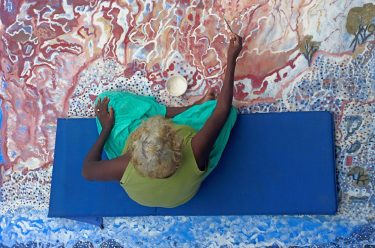
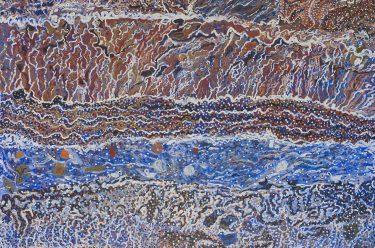
Love her work and appreciate a further understanding through the above commentary.